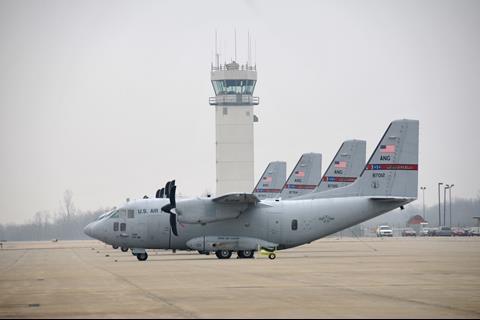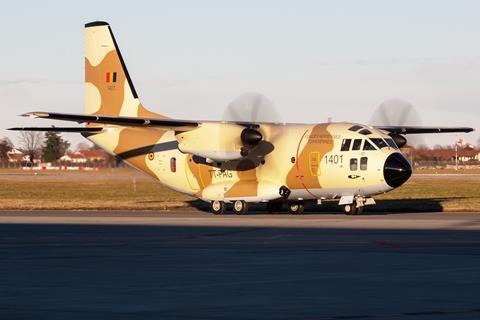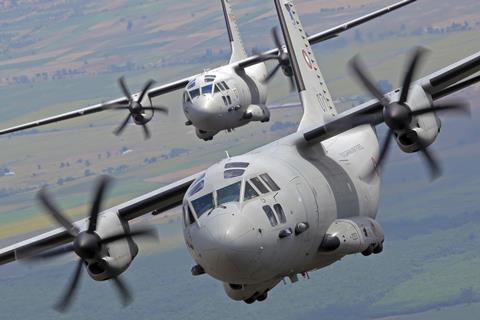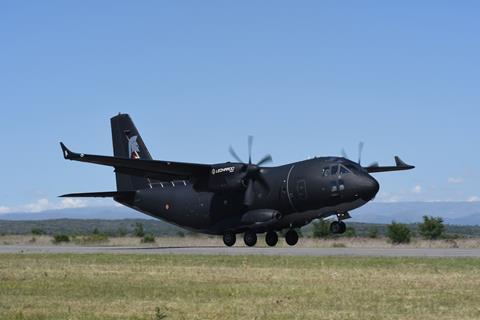As Leonardo’s C-27J Spartan programme reaches the 25th anniversary of the type’s first flight, we detail the twin-engined tactical transport’s current active fleet.
Designed as a major evolution of the earlier Alenia G222 airframe, the battlefield airlifter was developed to use the same Rolls-Royce AE 2100 turboprops as the four-engined Lockheed Martin C-130J.
Also sharing common avionics with the ‘Super Hercules’, the C-27J was developed under the Lockheed Martin Alenia Tactical Transport Systems (LMATTS) partnership.
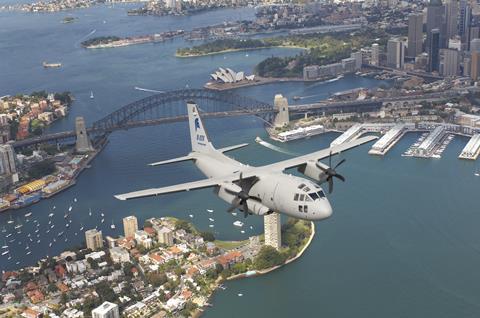
In our brief report about the 1h 32min debut flight – conducted from Turin Caselle airport in Italy on 25 September 1999 – Flight International noted: “Australia and Greece are evaluating the C-27J against the CASA C295, and LMATTS is proposing the airlifter in Argentina, Brazil, Malaysia, the Philippines, Poland and Taiwan, as well as in the USA, where up to 50 aircraft are required.”
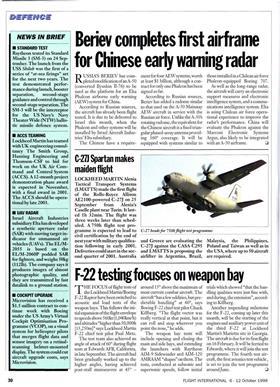
FlightGlobal test pilot Michael Gerzanics’ evaluation of the Spartan was published in our 24-30 August 2004 issue, under the headline ‘No small measure’.
Describing the platform as “a complete tactical airlifter”, he said its commonality with the larger C-130J would “significantly enhance its capabilities” over the earlier G222/C-27A.
“The large cargo compartment allows for drive on and off of utility vehicles and the direct transfer of standard-size pallets from large transport aircraft,” he noted, while “the upgraded avionics allow two pilots to successfully conduct air-drop operations.
“Rugged construction, redundant systems, self-protection systems and a high power-to-weight ratio combine to enhance combat survivability,” he noted.
“With 24 firm orders from the Greek and Italian air forces, the C-27J Spartan is on its way to defining the new standard for medium tactical airlifters,” he concluded, referring to initial orders for the type.
However, the new model’s biggest success came in 2007, when it was selected for the US Department of Defense’s Joint Cargo Aircraft (JCA) requirement, partnered with prime contractor L-3 Communications Integrated Systems.
A total of 78 aircraft were to be purchased to cover the JCA need, but in a major setback, the initiative was cancelled in 2011, with only 21 having been placed under contract. All of those aircraft are in current operational use with the US Army and US Coast Guard (USCG), with the US Air National Guard having fielded but then withdrawn the type.
Australia ordered 10 examples via the US government’s Foreign Military Sales (FMS) mechanism in May 2012, and deliveries to its air force commenced in 2015.
Cirium fleets data shows that 85 C-27Js are in current active use with operators in 15 nations, with Azerbaijan (1) the most recent addition. One aircraft also is recorded as being in storage: the second example acquired by Chad, which was damaged during a gear-up landing in N’Djamena last December.
The USCG – which employs the C-27J as a medium-range surveillance aircraft – is the largest single operator of the twin-turboprop type. The only other users to have a double-digit Spartan inventory are the Italian air force (12) and the Royal Australian Air Force (10).
Meanwhile, Cirium currently records just two C-27Js as in Leonardo’s firm production backlog: both for Tanzania. Ordered in January 2024, its airlifters will be delivered from next year, and used for “humanitarian missions, search and rescue and firefighting operations on Mount Kilimanjaro and in the East Africa region”.
| C-27J operators | ||
|---|---|---|
| Nation/service | In service | On order |
| Australia | 10 | |
| Azerbaijan | 1 | |
| Bulgaria | 3 | |
| Chad | 1 | |
| Greece | 8 | |
| Italy | 12 | |
| Kenya | 3 | |
| Lithuania | 3 | |
| Mexico | 4 | |
| Morocco | 4 | |
| Peru | 4 | |
| Romania | 7 | |
| Slovakia | 2 | |
| Tanzania | 2 | |
| US Army | 7 | |
| US Coast Guard | 14 | |
| Zambia | 2 | |
| Total | 85 | 2 |
| Source: Cirium fleets data | ||
In late 2023, Leonardo announced that the global C-27J fleet had logged 250,000 operational flying hours.
It now produces the type in an NG-model standard, which has introduced winglets and new avionics equipment. Other variants to have been proposed include dedicated gunship, firefighting and maritime patrol adaptations.
The Italian air force, meanwhile, is advancing with an MC-27J Praetorian special mission update for part of its fleet.
Launched in 2022, the activity will adapt the transport to support special forces operations, with enhancements including new electronic warfare (EW), communications intelligence and self-protection equipment.
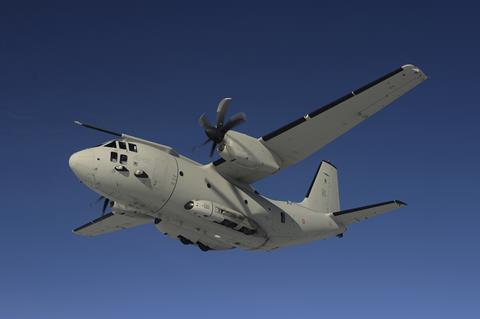
“The EW-Jedi version is intended for convoy escort missions for which it is able to ensure, from the air, a robust electromagnetic security framework,” the defence ministry says. This will include an ability to protect ground forces against attack using improvised explosive devices, following lessons learned from operations in Afghanistan.
“Additional resources will be needed in the period 2027-2028” to complete the fleet update, Rome says in its recently published defence programme plan for 2024-2026.
























